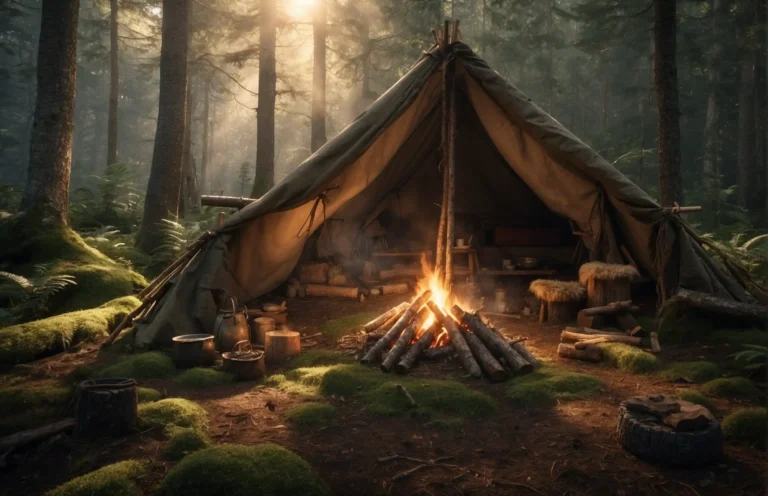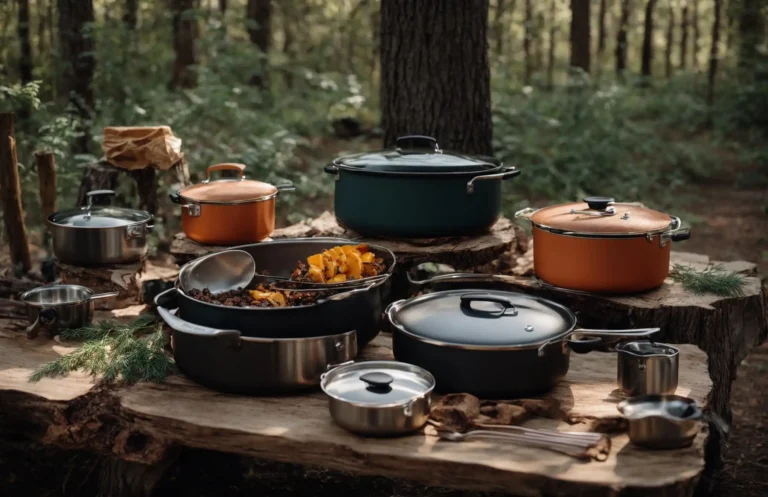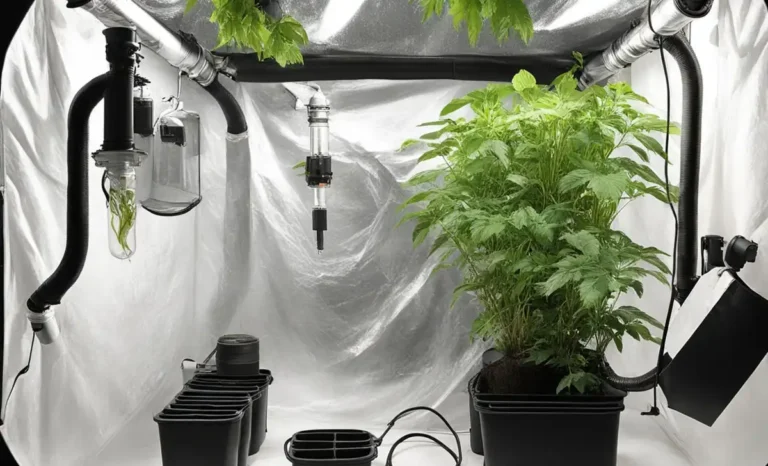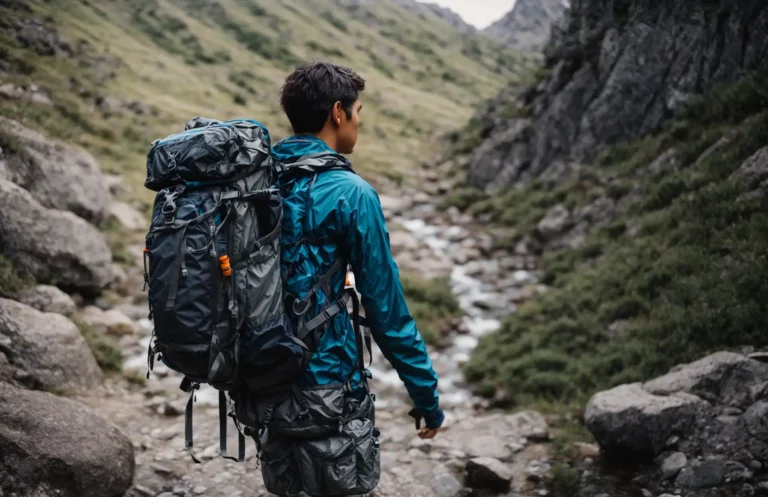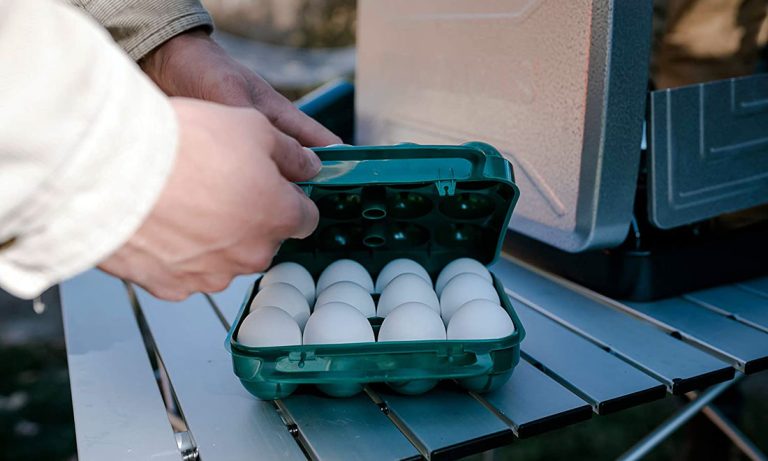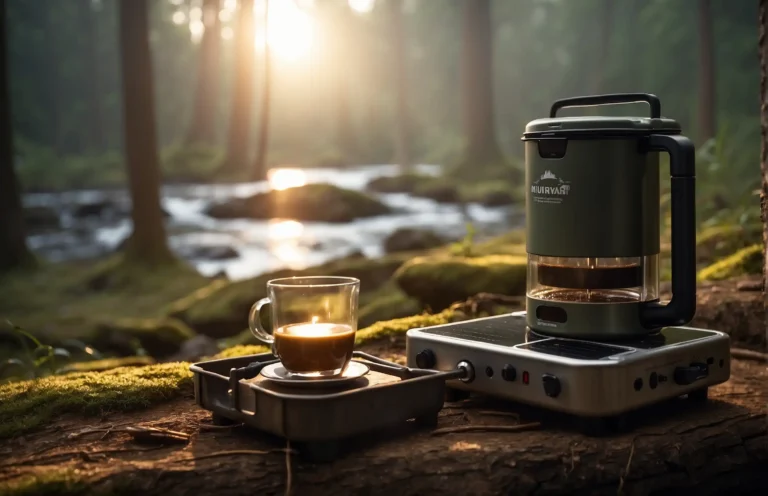Store cast iron cookware for camping by keeping it clean, dry, and seasoned. Protect it with a cover or store in a dry bag to prevent rust.
Ensuring your cast iron remains in top condition while camping can be a game-changer for outdoor cooking enthusiasts. Cast iron cookware, prized for its durability and heat retention, requires proper storage to maintain its quality. Before embarking on your adventure, make sure your cast iron is well-seasoned; this creates a natural, non-stick surface and helps prevent rust.
After use, clean it with hot water, dry it thoroughly, and apply a light coat of oil. This process safeguards the cookware against moisture and the elements while you’re enjoying the great outdoors. Remember that proper storage is crucial, especially in variable outdoor environments. A breathable cover or a ventilated storage bag will do wonders in keeping your cast iron pristine, ready for your campfire feasts.
Understanding Cast Iron Cookware
Understanding Cast Iron Cookware delivers a quintessential piece of outdoor culinary history into the hands of modern campers. Recognized for its robust nature and superior heat retention, cast iron cookware is the perfect companion for open-fire cooking. Grappling with the challenges of the great outdoors, this enduring material stands the test of time, promising a sizzling feast under the stars.
The Benefits of Cast Iron For Camping
Embracing cast iron cookware for camping is a decision that pays off in flavor and functionality. The distinct advantages include:
- Even Heat Distribution: Cast iron provides consistent heat, which is essential for cooking over an unpredictable campfire.
- Resilience: Its sturdy construction can handle the knocks and bumps of camping life without major damage.
- Versatility: From searing steaks to baking cornbread, one piece of cast iron cookware serves numerous culinary purposes.
- Non-Stick Qualities: With proper seasoning, the cookware offers natural non-stick performance, minimizing cleanup time.
- Longevity: When maintained correctly, cast iron cookware can last for generations, making it an eco-friendly choice.
The Importance of Proper Storage For Durability
To maximize the lifespan of cast iron cookware, proper storage is non-negotiable. Adhering to the following guidelines ensures durability and performance:
- Clean Thoroughly: After use, clean your cast iron with hot water to remove food particles. Optimally, avoid soap to preserve seasoning.
- Dry Completely: Moisture is cast iron’s nemesis. Ensure the cookware is bone-dry to prevent rust.
- Oil Lightly: Apply a faint layer of oil to form a protective barrier against moisture and rust.
- Store in a Dry Place: Select a storage space free from dampness and extreme temperature variations.
- Use Paper Towels: Place paper towels between stacked items to shield the seasoned surfaces from scratching.
Remember, with proper care and storage, your cast iron cookware will not only survive the rugged camping environment but will come out on the other side as a trusted companion, ready for your next adventure.
Preparing Cast Iron For Storage
Avid campers know the joys of cooking over an open flame with cast iron cookware. But once the campfire embers have cooled, proper storage is vital to maintain the integrity and longevity of your cast iron. Preserve your cookware’s functionality and prevent rust by following these key steps before stowing away your trusty skillet or dutch oven until its next adventure beneath the stars.
Cleaning and Drying Cast Iron Before Storage
The first step in prepping your cast iron for storage is to ensure it’s impeccably clean. Leftover food particles or moisture can cause damage over time, so here’s the best way to clean and dry your cast iron:
- Remove any remaining food scraps by gently scrubbing with a non-metal brush or scraper.
- Wash with warm water, using a mild soap if necessary.
- Rinse thoroughly to remove any soap residue.
- Dry the cookware immediately with a clean towel.
- Place the cast iron on a low heat source to completely evaporate any remaining moisture.
By ensuring your cast iron is dry, you protect it from the possibility of rust during storage.
Seasoning Cast Iron To Prevent Rust
A well-seasoned cast iron piece is less likely to rust. Seasoning forms a protective layer against humidity and moisture, which can be a menace, especially during outdoor excursions. Here’s how to season your cookware before storing:
- Once the cast iron is clean and dry, apply a thin layer of food-grade oil to all surfaces.
- Wipe off excess oil with a paper towel to leave a sheen that isn’t sticky.
- Place the cookware upside down in an oven preheated to 375°F (190°C) for an hour.
- Turn off the oven and let the cookware cool in the oven.
Seasoning not only prevents rust but also enhances non-stick properties, making your next camping cookout easier and more enjoyable.
Cooling: Allowing Cast Iron To Reach Room Temperature
It’s crucial to let your cast iron cool down naturally. Sudden temperature changes can warp or crack your cookware. Follow these steps:
- After seasoning in the oven, allow the cast iron to cool inside until it reaches room temperature.
- Refrain from placing it on cold surfaces or outdoors, especially in colder climates.
Once cooled, your cast iron is now ready to be stored. Whether you’re packing it up in your camper or storing it at home, proper cooling and seasoning ensure a long life for your cast iron gear.
Choosing the Right Storage Solutions
When camping, safeguarding your cast iron cookware is crucial to ensure it lasts for future adventures. The challenge lies in selecting storage solutions that protect your cast iron from damage while being efficient with space. Explore the types of containers, padding strategies, and techniques for effective storage that keep your cast iron in pristine condition even when traversing the rough terrains of the great outdoors.
Types Of Storage Containers For Cast Iron
Selecting the appropriate container for your cast iron cookware hinges on a balance between protection and portability. Here are some top choices:
- Heavy-Duty Plastic Tubs: These offer a sturdy shell against impacts.
- Canvas Bags: Lightweight and perfect for individual pieces, canvas bags are ideal.
- Wooden Boxes: For a rustic touch, a custom wooden box could be a charming option.
- Padded Cookware Cases: Specifically designed for cookware, these cases offer built-in protection.
Preventing Cast Iron Damage With Proper Padding
Padding is essential to avoid scrapes and chips. Consider these methods:
- Felt Liners: Place between pans to prevent abrasion.
- Rubber Matting: Cut to size and use as a cushioned base.
- Custom Foam Inserts: Excellent for tailored protection around your cast iron.
- Towels or Blankets: Effective for wrapping and buffering individual pieces.
Space Efficiency: Nesting and Stacking Techniques
Effective storage is also about maximizing space efficiency. These strategies ensure every inch of your camping gear is optimally used:
- Nesting: Place smaller skillets inside larger ones with a protective layer in between.
- Stacking: Align skillets with handles in opposing directions to stack them up efficiently.
- Use Dividers: Wooden or plastic dividers can help keep stacked cookware stable.
Remember, proper organization can vastly reduce the amount of space cast iron occupies, making for a more organized and stress-free camping experience.
Maintaining Cast Iron While In Storage
Proper storage of cast iron cookware ensures it remains rust-free and retains its treasured seasoning, enhancing its longevity, especially for camping enthusiasts. The key lies in creating the right environment and adopting a routine to maintain the integrity of cast iron. Paying attention to the following details can make all the difference.
Controlling Humidity To Avoid Rust
Humidity is the archenemy of cast iron, as it promotes rust, which can ruin the cookware’s surface. Implementing effective storage solutions restricts moisture, keeping your cast iron in impeccable condition.
- Storage Space: Choose a dry, well-ventilated area. Avoid enclosed spaces like airtight containers.
- Desiccants: Use silica gel packets or a container of baking soda within the storage area to absorb excess moisture.
- Protective Lining: Place a layer of paper towels between stacked pans to promote air circulation and prevent scratching.
Periodic Oiling To Maintain Seasoning
Cookware seasoning is the cornerstone of cast iron’s non-stick surface and requires regular oiling to stay effective, even when not in use.
- Choose the Right Oil: Flaxseed or canola oil is ideal for seasoning due to their high smoke points.
- Apply a Light Coat: Use a clean cloth to apply a thin, even layer of oil to every surface.
- Remember to Heat: After oiling, you can optionally heat the cookware in an oven to help the oil polymerize, creating a harder, more durable seasoning layer.
Inspection and Maintenance Schedule
Regular inspection and maintenance keep your cast iron in its best shape, ready for your next camping trip.
| Frequency | Maintenance Task |
|---|---|
| After Each Use | Clean and dry thoroughly before storing. |
| Monthly | Inspect for signs of rust or damage. Check seasoning and reapply oil if necessary. |
| Annually | Deep clean and re-season as needed to restore non-stick properties. |
Packing and Transporting Cast Iron For Camping
Camping enthusiasts know that one of the most reliable tools for cooking over a campfire or on a camp stove is cast iron cookware. Its durability and ability to retain heat make it ideal for outdoor cooking. However, the challenge often lies in packing and transporting cast iron safely without damage or unnecessary strain. To ensure your cast iron arrives in pristine condition and ready for use, here are some tried-and-true methods for its care during transit.
Protective Wrapping: Keeping Cast Iron Safe on the Move
The key to keeping your cast iron protected while on the move is proper wrapping. Before packing, ensure the cookware is clean and completely dry to prevent rust. Wrap each piece in a protective layer of paper or cloth. Old newspapers or towels work well, providing a buffer that cushions the cookware and absorbs any moisture.
For added protection, consider using bubble wrap or specially designed cast iron carry bags. These additional layers guard against scratches and dings that can occur from jostling during transport. Secure the wrapping with tape or a sturdy cord, but remember to leave the handles accessible if you anticipate needing to use the cookware in a hurry.
Also know: How to Stay Cool While Camping Without Electricity
Balancing Weight and Accessibility in Your Pack
Cast iron’s hefty weight can be a concern, so balance is crucial. Distribute the weight evenly between packs or within your vehicle to avoid overloading one side. Place the heavier cast iron pieces at the bottom of your pack or container, with lighter items on top. Not only does this prevent items from shifting, but it also makes carrying more manageable.
- Choose a pack with sturdy straps.
- Position cookware strategically to avoid shifting.
- Pack lighter items around the cast iron to stabilize it during travel.
It’s important to ensure quick accessibility. If you plan to cook upon arriving at your campsite, keep your cast iron at the top of your gear for easy retrieval.
Unpacking and Post-camping Storage Tips
Once you’ve arrived at your destination, unpack the cast iron carefully to avoid injuries or damage to the cookware. If any pieces got damp during the trip, dry them thoroughly before use. After your camping trip, cleaning and drying your cast iron before storing it will prevent rust and keep it in excellent condition.
Store your cast iron in a cool, dry place. If stacking cookware, place a layer of paper towel or a pan protector between them to maintain seasoning and prevent scratches. Hanging cast iron is another great option that keeps it away from moisture while allowing air circulation. Remember to check your cookware periodically for any signs of rust, and if necessary, re-season it to maintain a non-stick surface.
- Clean and dry cookware before storing.
- Store in a dry place with air circulation.
- Use separators when stacking to preserve the seasoning.
- Regularly inspect for rust, and maintain seasoning when needed.
Conclusion
Securing your cast iron gear properly ensures carefree campfire cooking for years. Opt for dry, cool storage, and use oil after cleaning to prevent rust. Remember, your cast iron is as resilient as it is cared for. Store it right, and it’ll be a trusty companion under the stars, meal after memorable meal. Join the Outdoor Awaits family! Head over to our Learning section for engaging and informative camping guides.

